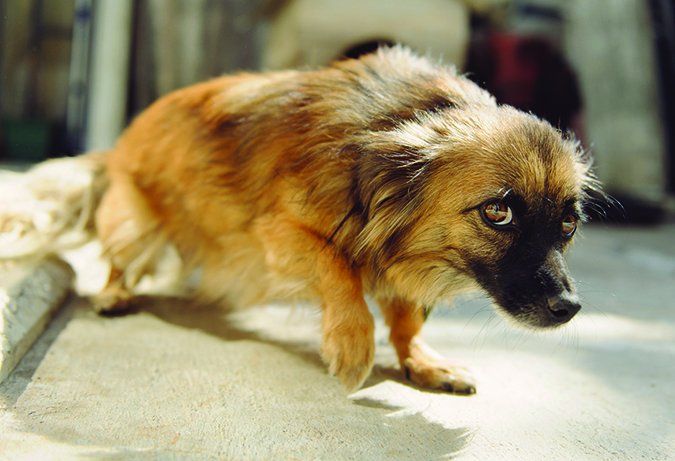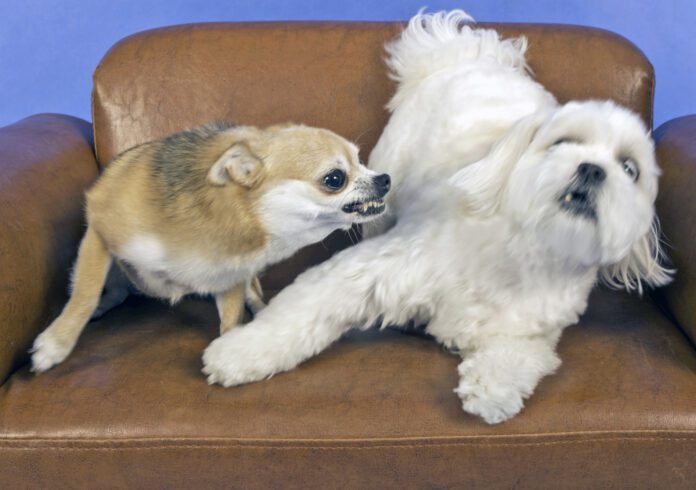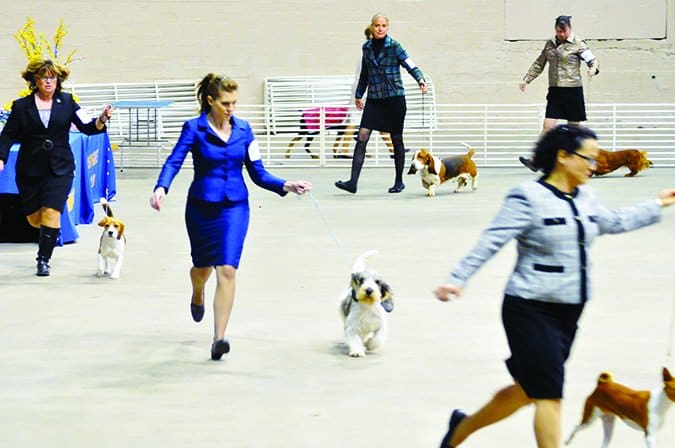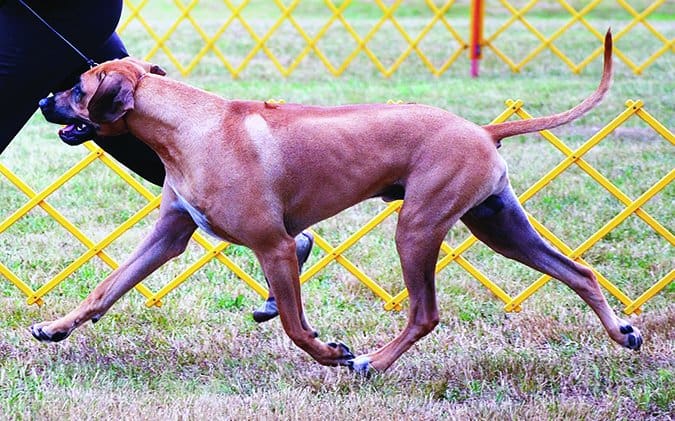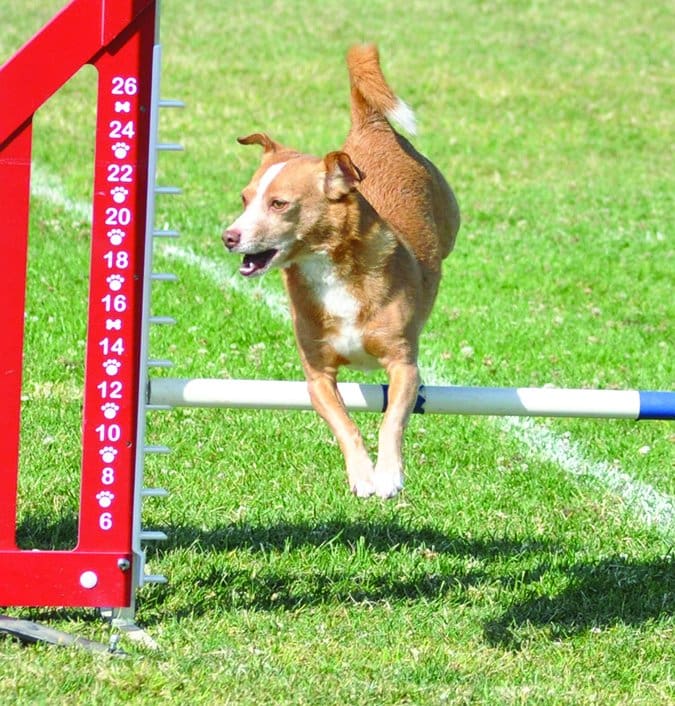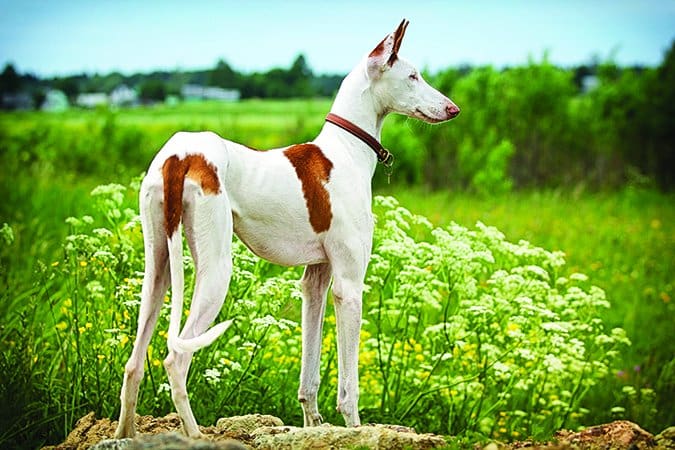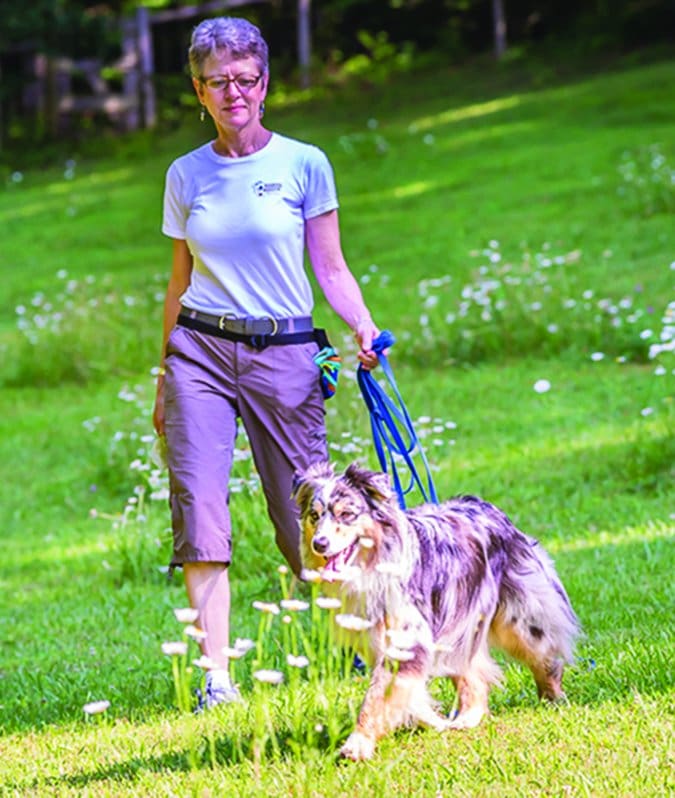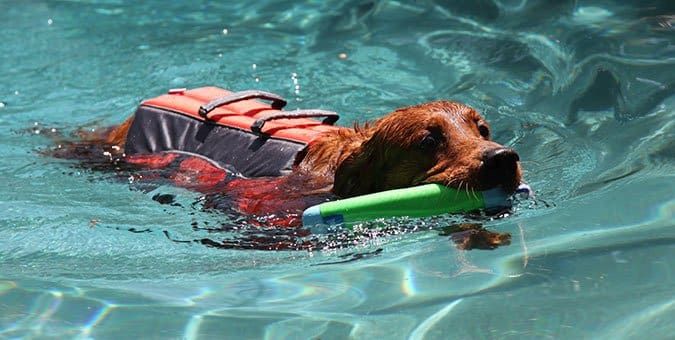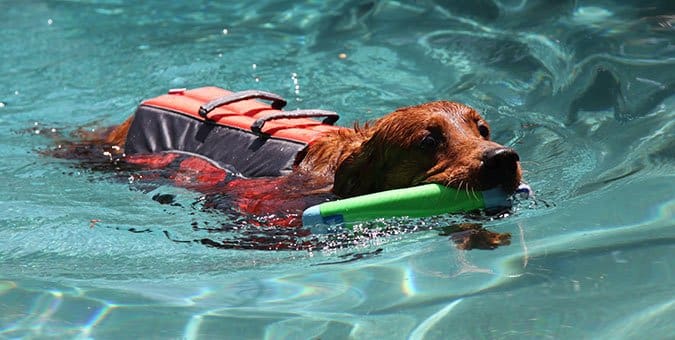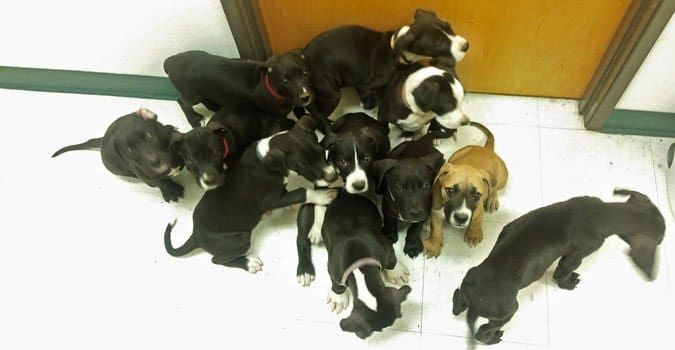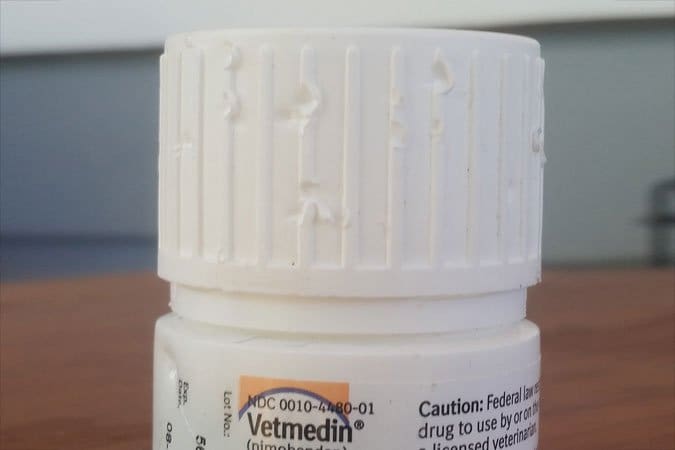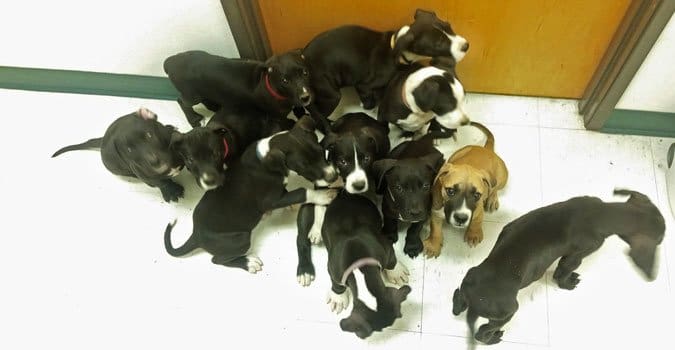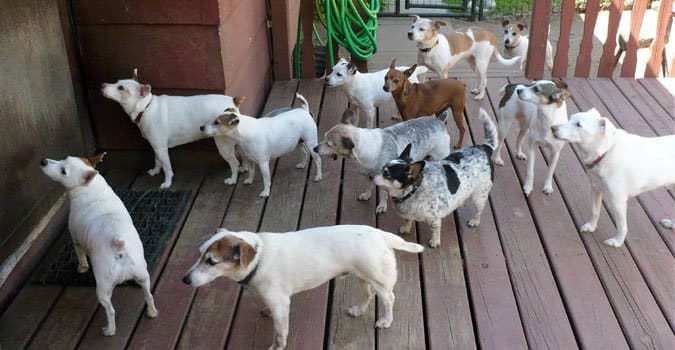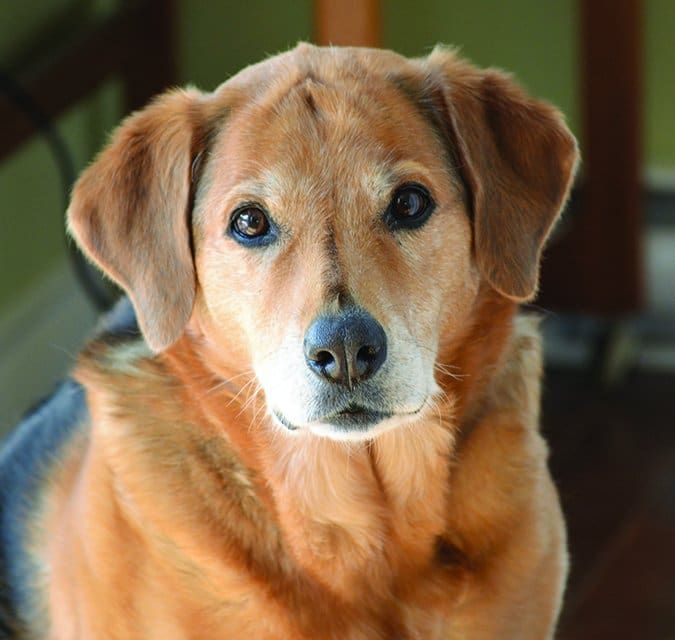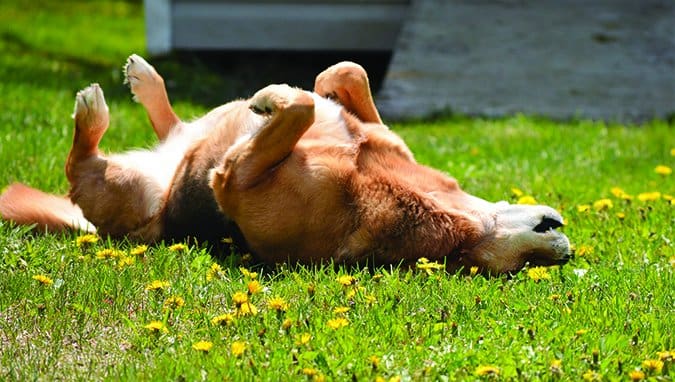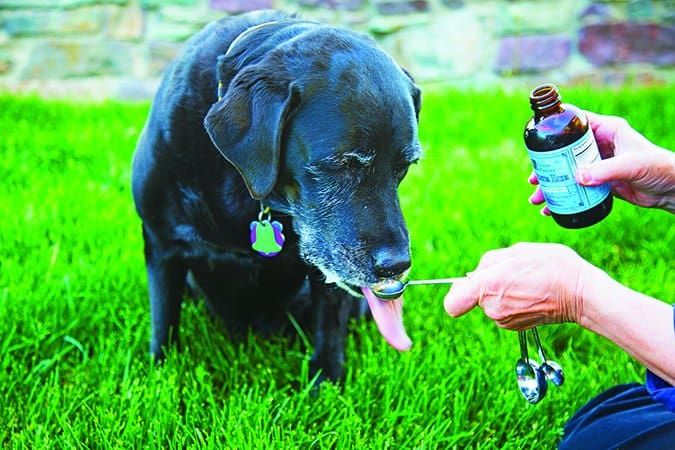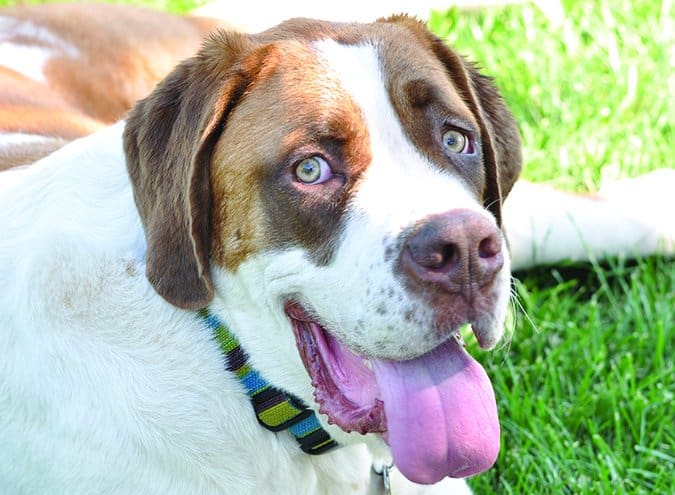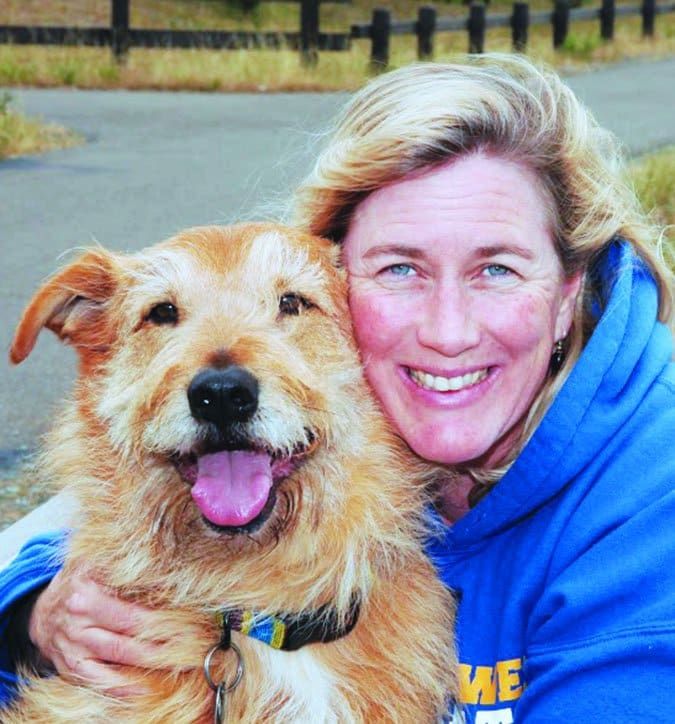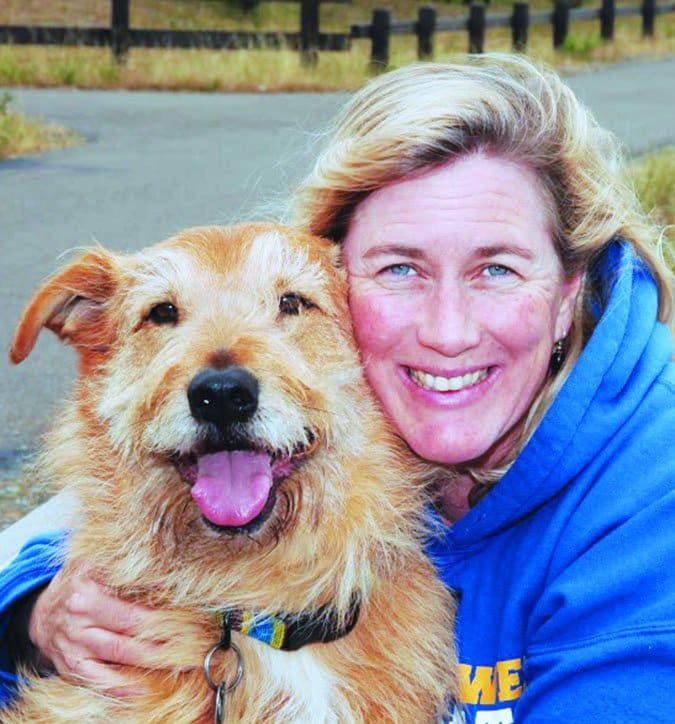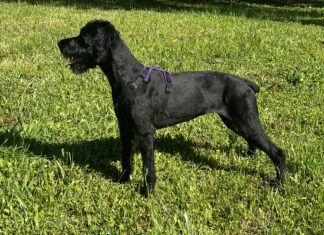I saw two clients last week, both for fear-related aggression. That’s not surprising, since my practice specialty is aggression (although I also work with lots of other behaviors), and fear is by far the most frequently observed cause of aggression. I see it a lot, and professionals who work with modifying aggressive behavior in dogs generally agree that it is more common than any of the other classifications of aggression. In her excellent book Manual of Clinical Behavioral Medicine for Dogs and Cats (Elsevier, 2013), renowned veterinary behaviorist Dr. Karen Overall says, “Fear aggression can be a common condition in part because its exhibition may have been adaptive for the dog.” That is, dogs in the wild who fight back against things that frighten and threaten them tend to live. The good news for owners of fearful dogs is that fear-related aggression can be managed and modified. Fearful dogs can live long and happy lives.
Fear-related aggression most frequently appears between the ages of eight to 18 months, as a young dog reaches maturity. This may be because increased boldness tends to come with maturity. But it’s also likely because, over time, aggressive responses are reinforced; the scary stimulus (most often a human, when we’re talking about aggression issues) backs off. Initially, a fearful pup generally tries to hide from scary humans by moving away, perhaps crawling under a chair. The well-meaning human, feeling sorry for the frightened pup, picks her up and cuddles her to reassure her, thinking, “I just need to show her enough love, and she’ll come around.” Unfortunately, love is rarely enough.
Initially, the fearful puppy often shuts down, thinking she’s probably going to die and there’s nothing she can do about it. Humans misread this, thinking the puppy is comfortable with the attention.
At some point, the frightened puppy, feeling trapped, may growl and bare her teeth at an approaching human. Wisely, the human backs off, probably thinking, “Whoa, where did that come from?” Meanwhile, the puppy has a light bulb moment, thinking, “Hey, that worked, I’ll try that again next time!” The behavior is negatively reinforced (the pup’s behavior of growling made a bad thing go away), and behaviors that are reinforced increase. Each time the pup growls, snarls, snaps, or even bites, she becomes more convinced that aggression is a successful behavioral strategy for making scary humans leave her alone. She survives. People leave her alone. The aggression increases.
It might seem logical, then, to tell people not to back away when a fearful dog offers a growl, snarl, snap, or bite. After all, we don’t want to reinforce that undesirable behavior, do we? Logical perhaps, but very wrong. In the moment, the risk of reinforcing the behavior is the lesser of two evils; far better than getting bitten. By all means, back away – without any kind of reprimand, I might add, because this will only confirm your dog’s already strongly held conviction that bad things happen when scary humans are around.
The far better answer is, first, to prevent people from trespassing on a dog who doesn’t welcome the interaction. This takes management. Start by managing your dog’s environment so he doesn’t feel the need to protect himself from humans or other scary stimuli; use leashes, baby gates, exercise pens, closed doors, and clear instructions to anyone who may come in contact with your dog. Don’t do – and don’t allow anyone else to do – the things that you know might make your dog growl, snap, or bite.
Is Your Dog’s Aggression a New Behavior?
Clients who come to me with their adolescent dog who has recently started biting often tell me this is a new behavior, with no previous indication of aggression. Upon further questioning, they almost always confirm that their dog has been fearful since puppyhood – it’s only the actual biting that’s new.
The smartest owners address fearful behavior well before biting starts. The next-smartest humans seek professional assistance the first time their dog bites. And then there are those who wait until their dog has a significant bite history…
As with most behaviors, the likelihood of successful behavior modification is much greater if you start sooner rather than later. And with aggression, you’re better off seeking the help of a qualified professional than trying to do it on your own. (See “Qualified Professionals to Consider for Help“.)
Modifying a Dog’s Fearful Behavior
There are a number of appropriate techniques for modifying fear-related aggression. Of course, none of them utilize pain, force, or fear. No shock collars, no prong collars, no alpha rolls. These are all significant stressors, and while they can sometimes succeed in shutting down behavior temporarily, they have a very high likelihood of making aggressive behaviors worse in the long run. Here are my favorite techniques for modifying fear-related aggression:
Stress-Reduction
Aggression is caused by stress – not just the stress of the immediate scary thing, but any stressors in the dog’s world. Every dog has a bite threshold – that point at which the stress becomes too much, and the bite happens. Stressors stack up like building blocks, pushing the dog closer and closer to that threshold until, like the straw that broke the camel’s back, the dog bites. This is also sometimes referred to as trigger stacking.
If you work to reduce the stressors in the dog’s world, there will be fewer building blocks in her stack, moving her farther away from her bite threshold and making her less likely to bite, even when faced with a scary human.
You can reduce some stressors by getting rid of them altogether – for example, by treating medical conditions, alleviating chronic pain with medication, and throwing choke, prong, and shock collars into the garbage can. You may need to manage your dog’s exposure to other stressors, for example, by putting your dog in the backyard while you vacuum or when your cousin drops by with her three out-of-control children. With still other stressors, you can use the methods listed below. Time to make a comprehensive list of your dog’s stressors and get to work!
Priming
This one is simple. Priming simply means doing something fun to put your dog in a happy mood prior to encountering one or more of her stressors. It makes sense; are you better able to deal with a stressful situation if you’re in a good mood going into it, or if you’re already stressed out and unhappy? A game of tug or fetch, or even doing tricks or other behaviors your dog loves can help set her up for a more successful behavior modification session.
Counter-Conditioning and Desensitization (CC&D)
This involves changing (countering) the dog’s existing negative emotional response to a stimulus – in this case, scary humans.
You do this by presenting a human (we’ll call him Bob), standing still, at sub-threshold distance – that distance at which your dog sees Bob and is alert, aware, and only a little concerned. The instant your dog sees Bob, feed her several very high-value, pea-sized treats (my favorite for CC&D is chicken – canned, baked, boiled, or broiled). Let her look at Bob again, then feed her more chicken. In short order she is likely to glance at Bob and immediately look back at you for chicken. We call this a Conditioned Emotional Response (CER) and it tells you that she is now beginning to associate Bob’s presence with chicken.
Note: Continue to deliver chicken as quickly as you can; do not wait for a CER in order to feed her bits of chicken. It’s Bob’s presence that makes the chicken happen, not the behavior of looking at you.
Now have Bob start moving around a little (this makes him scarier) and continue the look-feed sequence. Very gradually have Bob come closer by moving diagonally (not a direct, head-on approach – that is much scarier). Stop the session when things are going well (20-30 minutes is usually a good time frame).
Over time, do this with lots of different people, not just Bob. You can set yourself up with a comfy chair and your dog in a public place where people will pass by regularly at a safe, sub-threshold distance, and do look-feed every time someone walks past. As she gets happier and happier to have people around (lots of chicken!), you can eventually work up to more direct approaches, and having people drop treats as they walk past.
Finally, when you are sure your dog is ready – because she seems very relaxed and happy to have people moving around her – have people start feeding her treats and carefully interacting with her. Let her come to them, and don’t allow them to bend over her and rudely pat her on top of the head.
Note: Resist the temptation to push your dog too hard, too fast, too soon. We have a saying in behavior modification, “If you think you are going too slow, slow down.” Take lots of time. Err on the side of caution.
Treat and Retreat
This procedure is commonly attributed to veterinary behaviorist Dr. Ian Dunbar and/or training professional Suzanne Clothier, depending on your source.
Treat and Retreat is very simple and fun. Stand facing the scary person at sub-threshold distance with your dog on leash at your side. Have the person toss a high-value treat so it lands several inches in front of the dog. After she moves forward and eats it, have them toss a slighter lower-value treat several feet behind the dog. Repeat, very gradually moving the front-of-the-dog treat closer to the tosser. Do not attempt to have the tosser interact with the dog until the dog is clearly relaxed and happy and inviting interaction.
You will need to do Treat and Retreat with a variety of people to “generalize” your dog’s response and help her realize that all humans are a potential source for this wonderful game.
This process works because the dog is allowed to move away each time, so she gets relief from the pressure of moving closer to the person. If she is unwilling to move forward to eat the treat, you are asking too much of her – have the person toss the treat farther so she doesn’t have to come so close.
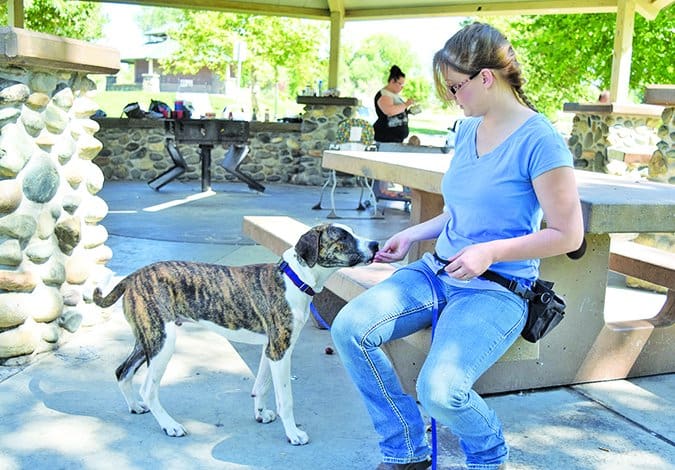
Constructional Aggression Treatment (CAT)
This procedure, developed by behavior professional Kellie Snider for her master’s thesis at the University of North Texas, utilizes negative reinforcement – where the dog’s behavior makes a bad thing go away – but in this case, the stage is set so that the dog has good behavior options for getting the “bad” thing to go away. CAT is more complicated than CC&D, and usually requires the assistance of an experienced behavior professional to implement it correctly.
We assume the fear-biting dog has been previously reinforced by having the scary person move away in response to any display of aggression. With CAT, the person approaches from a distance, and as soon as the person sees any sign of tension in the dog, he stops, marks the spot, and stands still. The instant the dog shows any signs of relaxation (a blink, a look away, sniffing, or even just relaxation in muscle tension) the person turns and walks 10-15 feet away. We have just negatively reinforced the dog’s calm, relaxed behavior. Pause for 15 to 20 seconds (or longer, if the dog needs more time to recover), and then have the person approach again to the same spot.
The process is repeated until the dog no longer shows any tension when the person reaches the marked spot, and then the person is directed to come a little closer – four inches to a foot or more, depending on the dog. The CAT procedure is repeated at each new distance, with the “scary” person moving closer only when the dog remains relaxed at the previous mark. She learns that calm, relaxed behavior makes scary people go away!
When all goes according to plan, because the dog is being reinforced for calm, relaxed behavior she actually becomes calm and relaxed, and at some point no longer feels the need to make the person go away. In fact, we often see switchover at some point, where the dog begins offering clear, affiliative signals, such as happy tail wags, play bows, and squinty eyes. She is clearly saying, “Please come closer, I’d like to get to know you!” At that point it is okay to allow her to approach the person, as long as that person understands to stay calm and not reach out to pet her, until it is crystal clear that the dog is comfortable with that.
CAT then also needs to be generalized with a variety of people until your dog decides that all humans are okay. (See “Modifying Aggressive Dog Behavior” May 2008, and “Constructional Aggression Treatment,” December 2009.)
Behavior Adjustment Training (BAT)
BAT also uses negative reinforcement, but the dog gets to move away from the scary human instead of the human moving away.
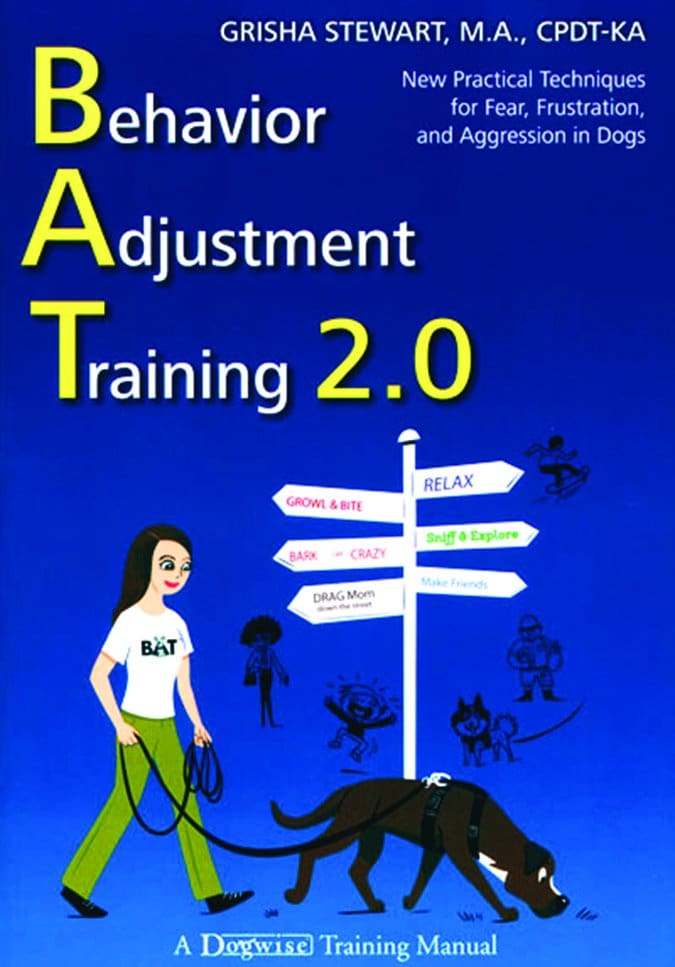
BAT was developed by trainer Grisha Stewart, CPDT-KA, as an alternative to the CAT procedure, which she felt had the potential to be too aversive to dogs. With the BAT procedure, the aversive stimulus (scary person) is stationary, and the fearful dog is allowed to approach the stimulus.
In the original version of BAT, the handler watches for a cut-off signal – body language that tells the handler the dog would prefer to increase distance from the scary thing, such as sniffing the ground or looking back at the handler. The handler can prompt the dog to increase distance when necessary to keep the dog below threshold (if the dog doesn’t offer a signal).
Stewart has evolved the BAT process substantially since its inception in 2009, and now gives the dog even more freedom of choice in his movements by working on a long line. BAT can best be understood in its current format via Stewart’s most recent book, Behavior Adjustment Training 2.0 (Dogwise, 2016; available from Whole Dog Journal).
Medications for Dog Aggression
No discussion of fear-related aggression is complete without a mention of medication. The appropriate use of psychotropic drugs can make all the quality-of-life difference in the world for a fearful dog and the humans who love her. However, few veterinarians have studied behavior! Your vet may not have a thorough understanding of the various behavior modification drugs, how they work, how to determine dosages, and which medication might be appropriate for which types of behavior – if she can even identify the behavior accurately.
When I have a canine client for whom medication might be appropriate, I urge my human client to insist that their veterinarian do a phone consult with a veterinary behaviorist for guidance in selecting the appropriate drug and dosage. While there aren’t many of them (fewer than 70 in this country), most veterinary behaviorists will do phone consults with other veterinarians at no charge, as a professional courtesy. A complete list of veterinary behaviorists in the United States can be found here.
Finding a Qualified Dog Behavior Professional
The name of the game in dog training and behavior is caveat emptor. Because there are no legal requirements for anyone to call themselves a behavior professional, anyone can claim to be a canine behavior consultant, or even a behaviorist. Finding the right behavior professional for your dog is a hike through a tricky jungle. Even if someone has professionally valid credentials, they may not have the skills and experience your dog needs.
You would do well to research the credentials of any and all training and behavior professionals you are considering, whether they bear an impressive set of letters behind their name or not. Then interview them. Ask about their methods and philosophies. Ask for references. Find out how long they’ve been practicing. Make sure they have ample experience working with the level and type of canine aggression your dog is presenting. Read their website, blogs and articles to see if what they publish about their work is congruent with what they tell you. Never, ever allow a professional to use shock, choke or prong collars, physical punishment, coercion or intimidation (such as alpha rolls) with your fear-aggressive dog (or any aggressive dog for that matter). These are all significant stressors, and while they can sometimes succeed in shutting down the behavior temporarily, they have a very high likelihood of making aggressive behaviors worse in the long run.
Commit to working only with a professional who has solid credentials, is committed to modern, science-based force-free methods, and whose personal style you are comfortable with. Dog training and behavior professionals should be as gentle and positive with their human clients as they are with their canine clients.
Despite the lack of legal requirements, the dog training and behavior profession boasts a mind-boggling panoply of credentials – some of them more meaningful than others. On the facing page are some of the legitimate credentials and affiliations to look for, assuming you are looking for a qualified positive reinforcement-based professional.
Finally, no matter how well you have pre-screened your professional, be prepared to intervene if at any time they try to do anything with your dog that makes you uncomfortable. Trust your instincts.
My Most Recent Cases
As it turns out, neither of the two fear-aggression clients I saw last week were typical.
Poppy is a four-month-old Boxer-mix who has already started snapping out of fear – at an age younger than fear aggression commonly presents. Poppy’s first snap was at a veterinarian. The pup had fearfully retreated from the vet’s advances and was trapped under a chair in the exam room. When the vet was unable to coax her out from under the chair with treats, she decided to try to examine the puppy where she was. When she reached for a paw, Poppy snapped at her but didn’t make contact. But, of course, the veterinarian wisely retreated, and Poppy was negatively reinforced. Additional snapping incidents in other circumstances followed in short order.
Coal is a six-year-old German Shepherd Dog, and while she has been fearful her whole life, she has never made any attempt to bite, until now. Her owners had gone on a five-day vacation, and while they were away the area was hit by a series of severe thunderstorms. Coal had always been anxious about storms, and the petsitter was proud that she’d gotten Coal to go outside to go potty during the thunder and lightning (whoops). When Coal’s humans arrived home they found a dog who was significantly more anxious and clingy than normal, and has since snapped at humans on two separate occasions. Trigger-stacking, anyone?
Both dogs are now working in counter-conditioning protocols. Like many of my clients who use these protocols for dogs who suffer from fear-related aggression, the owners are already reporting progress.


